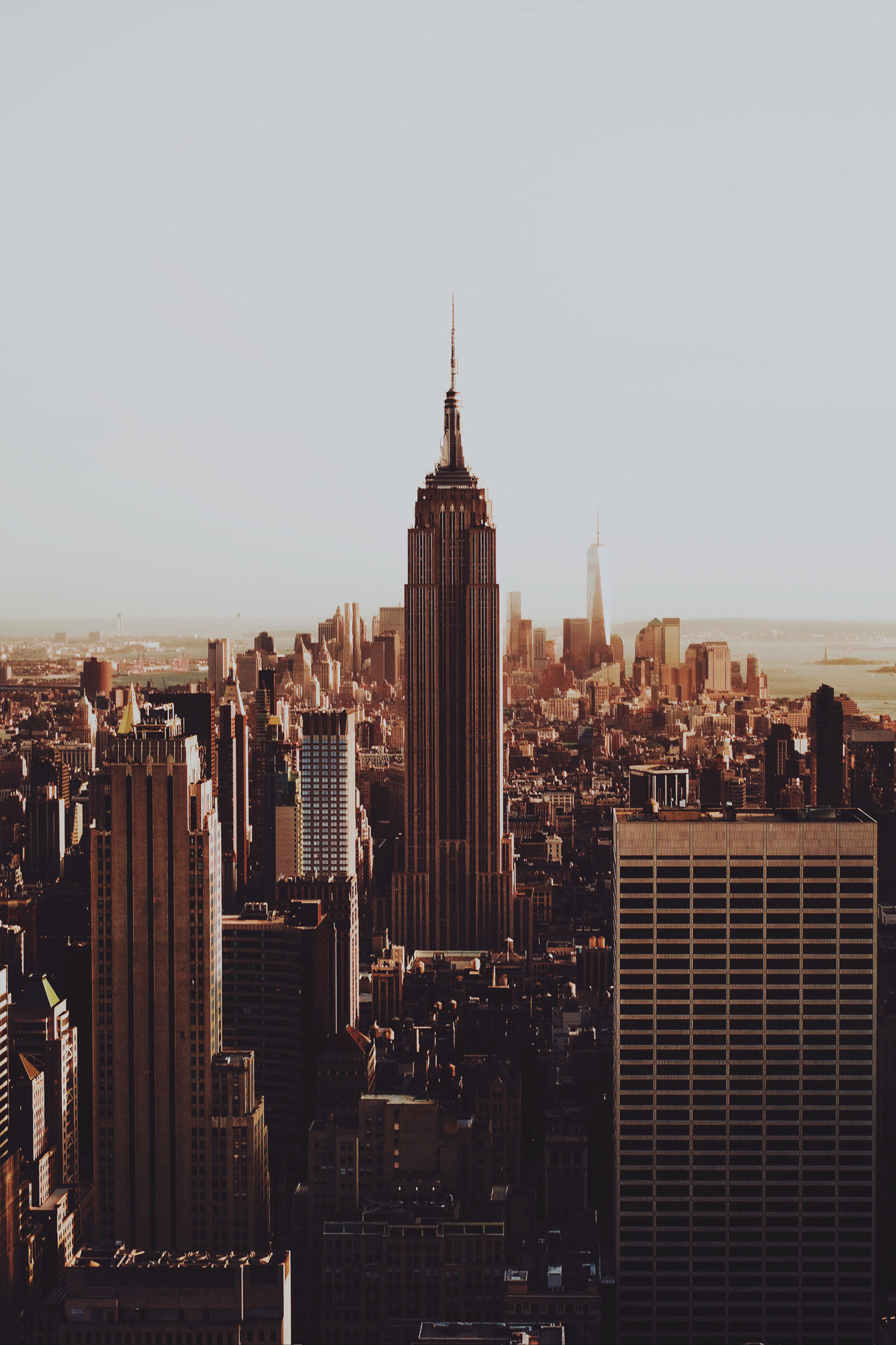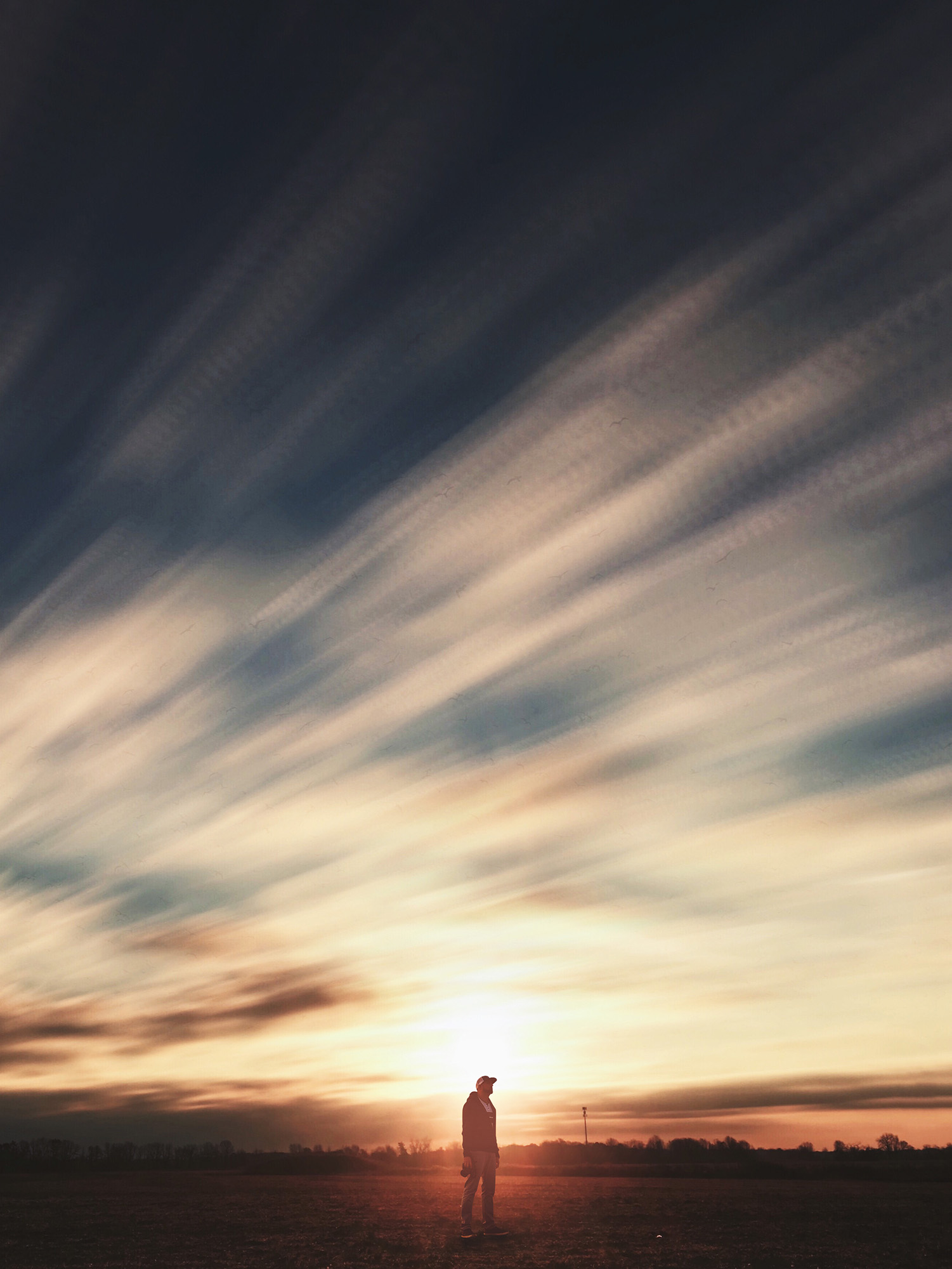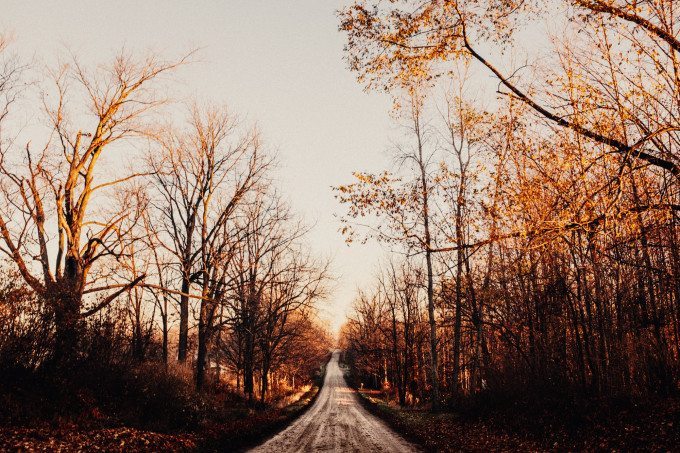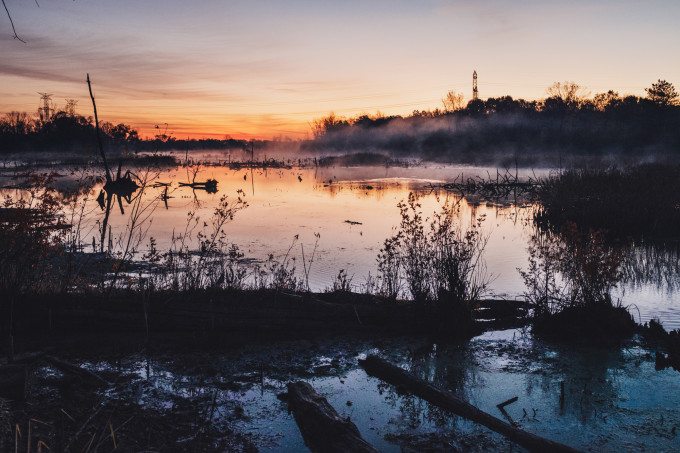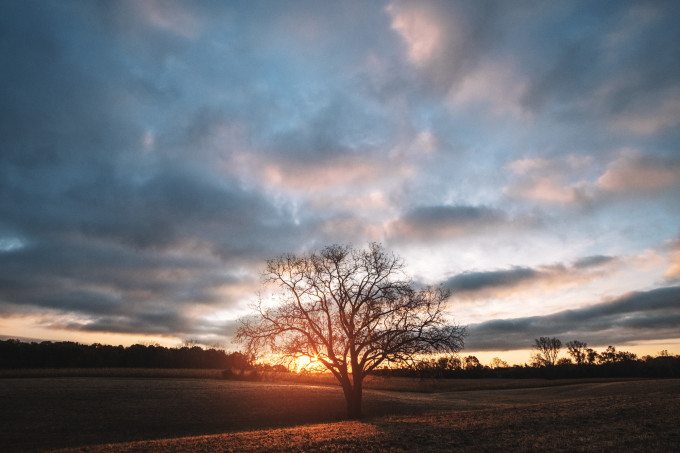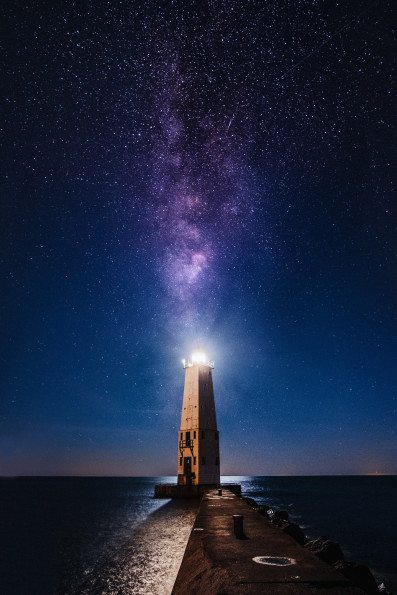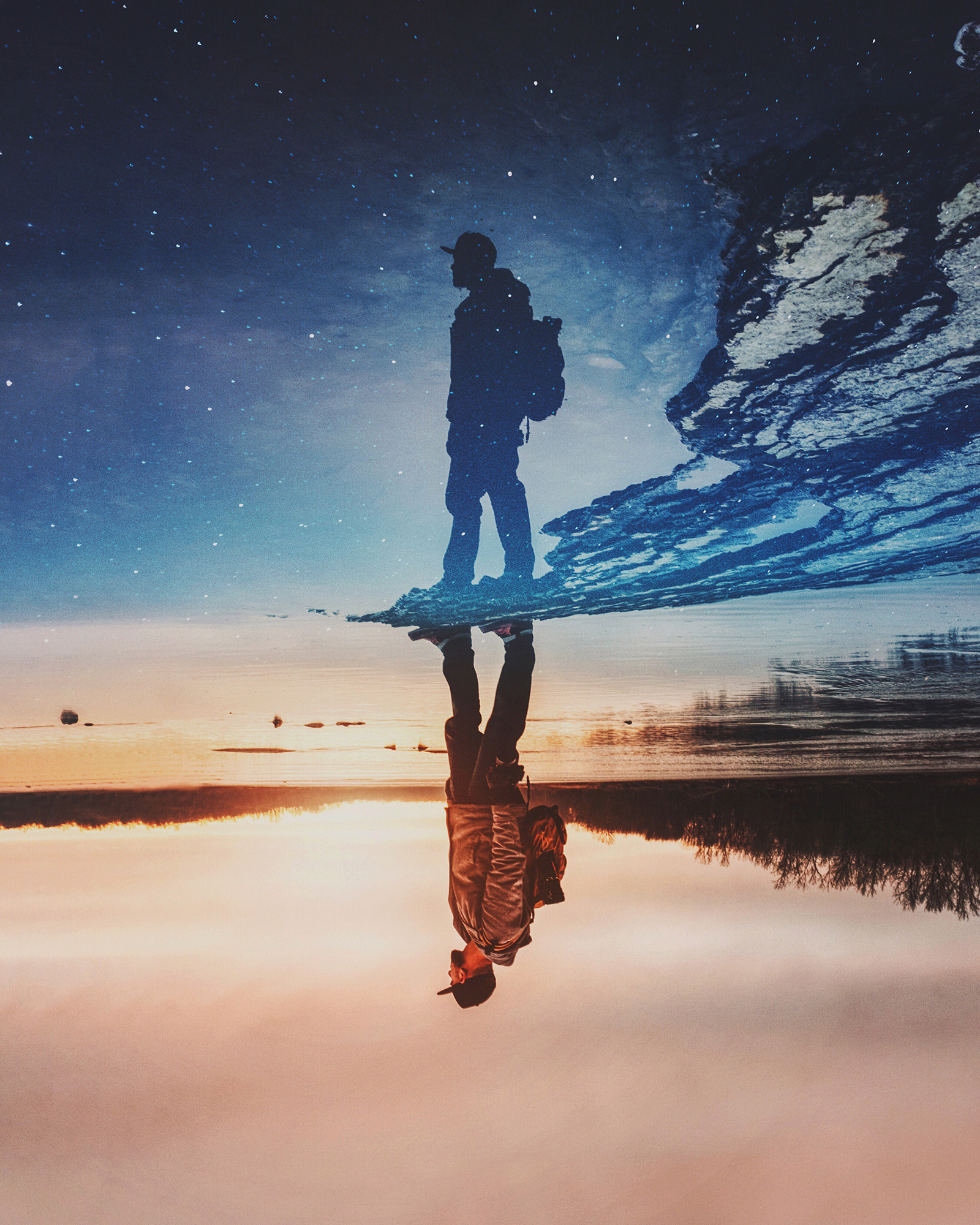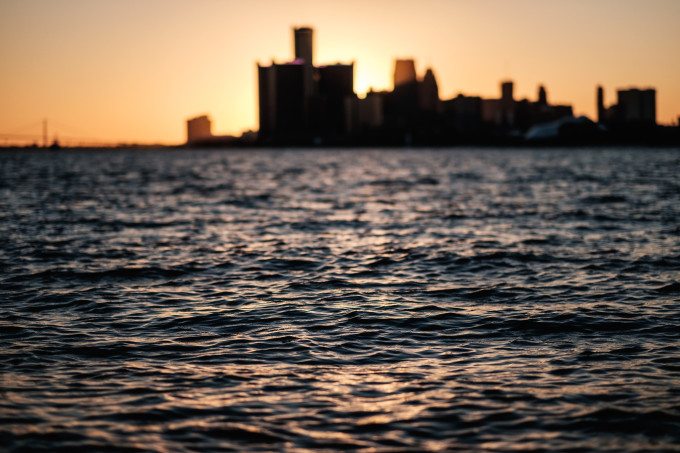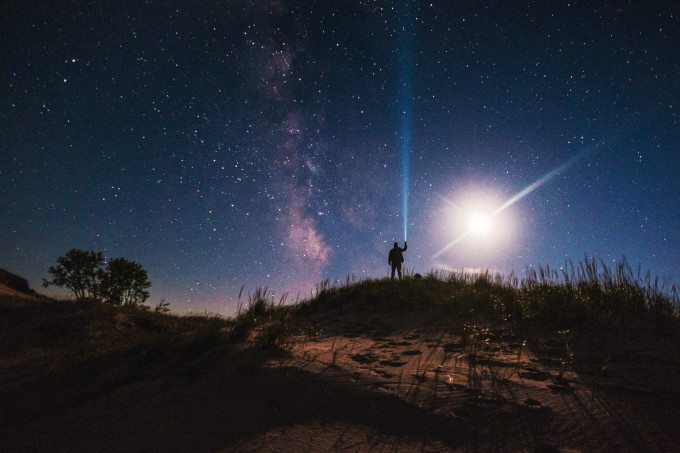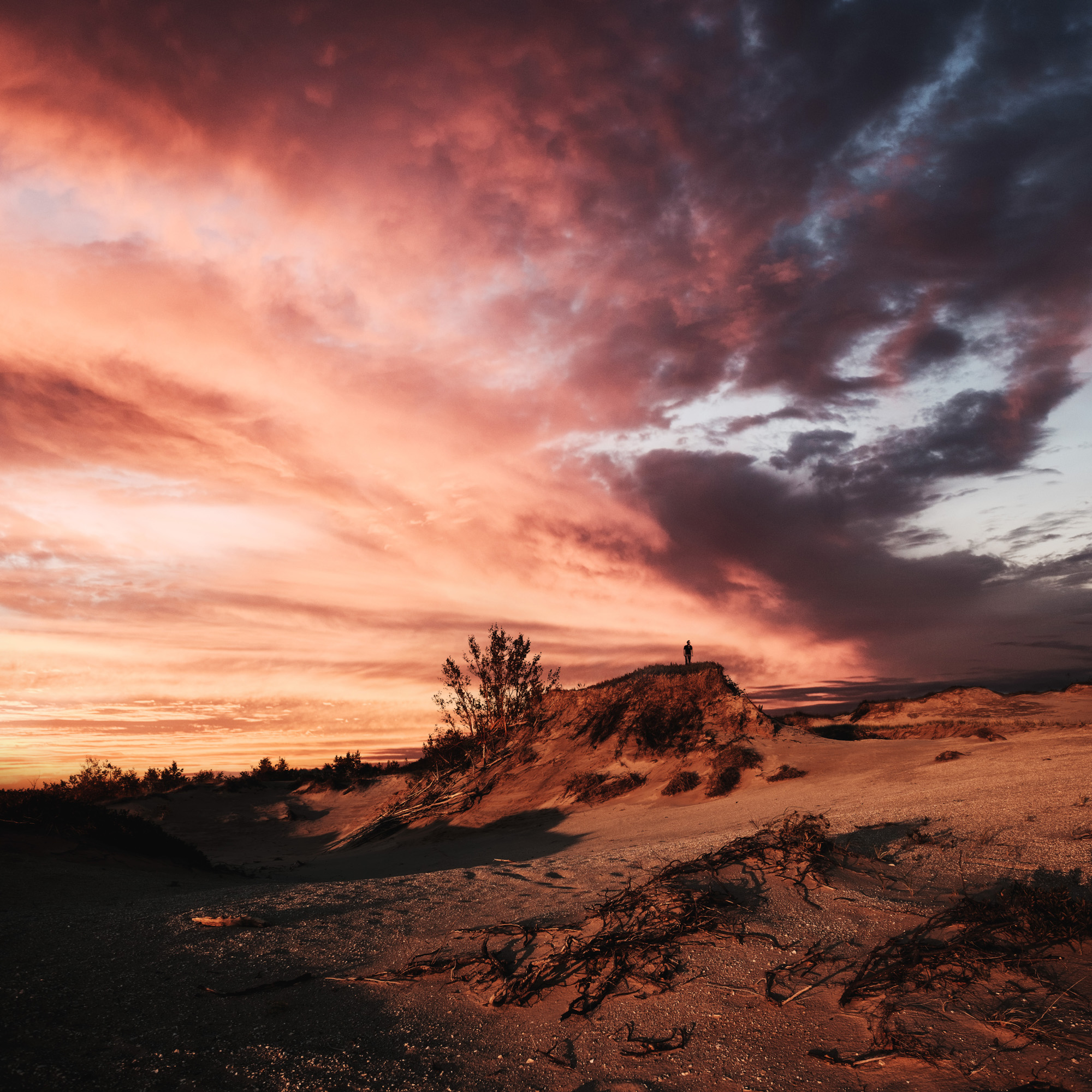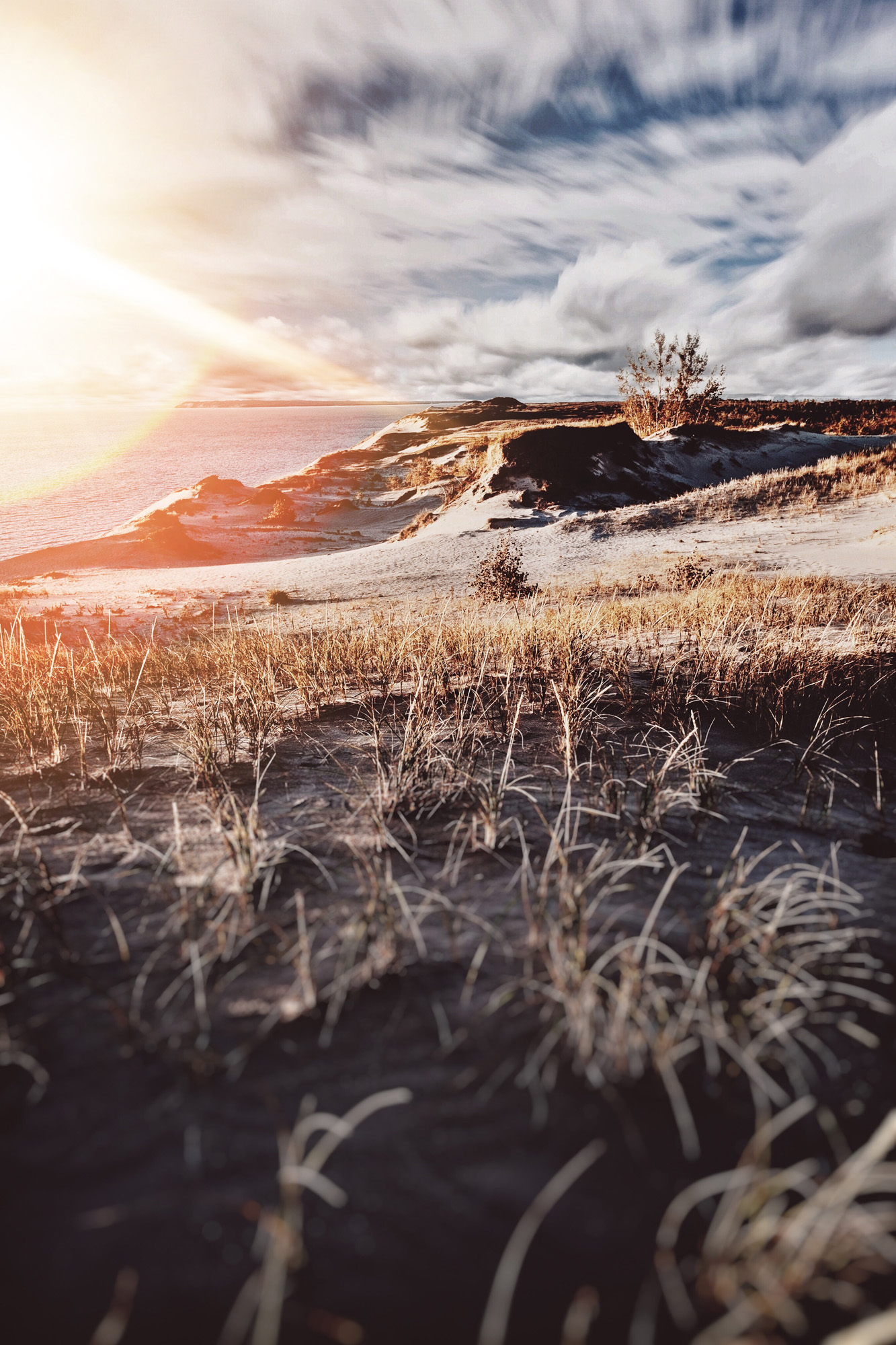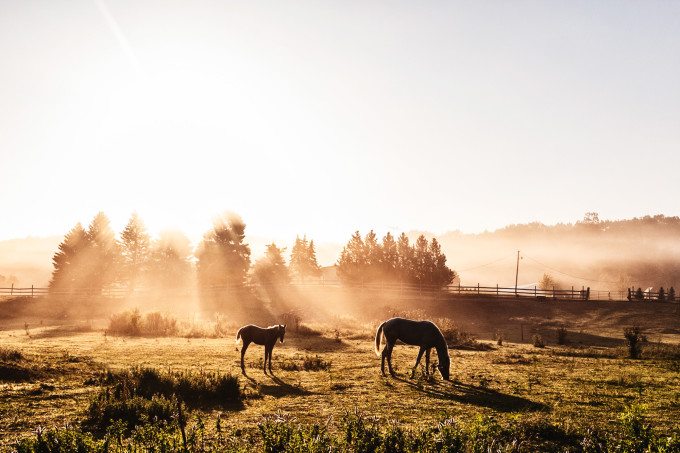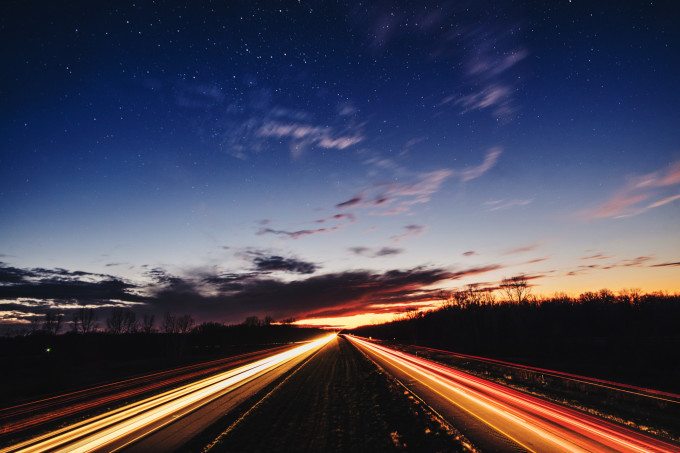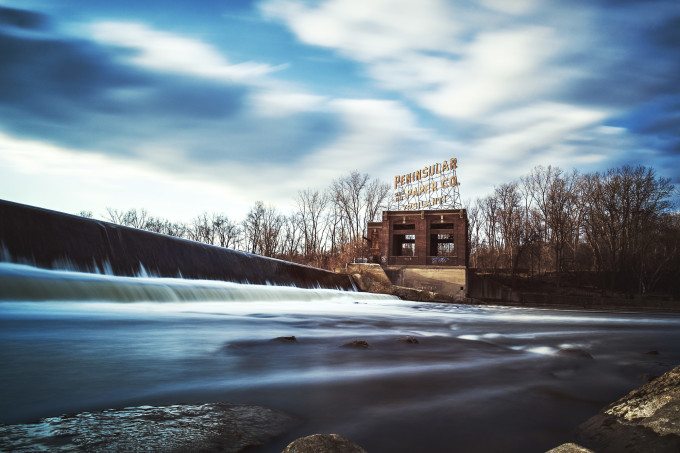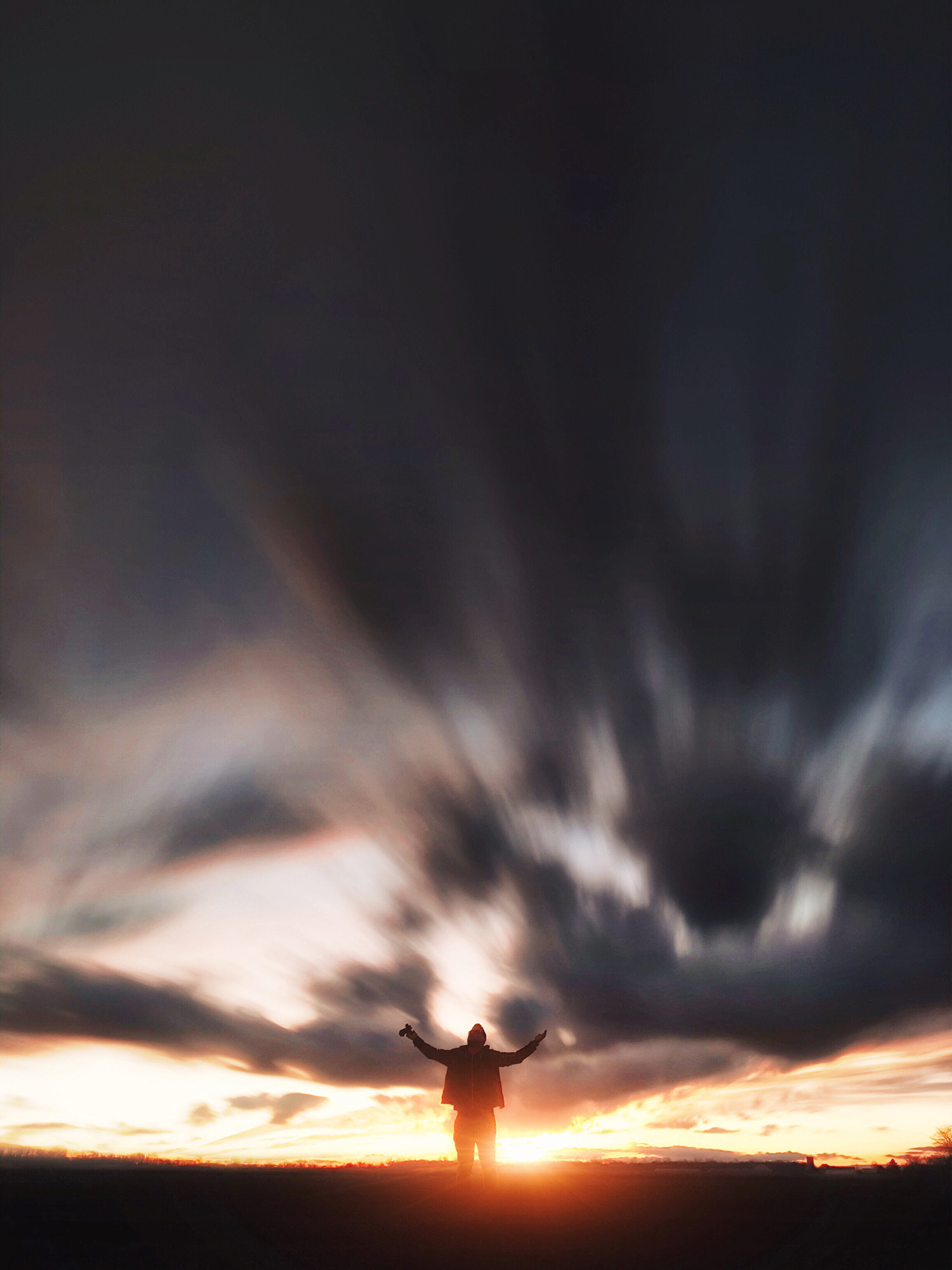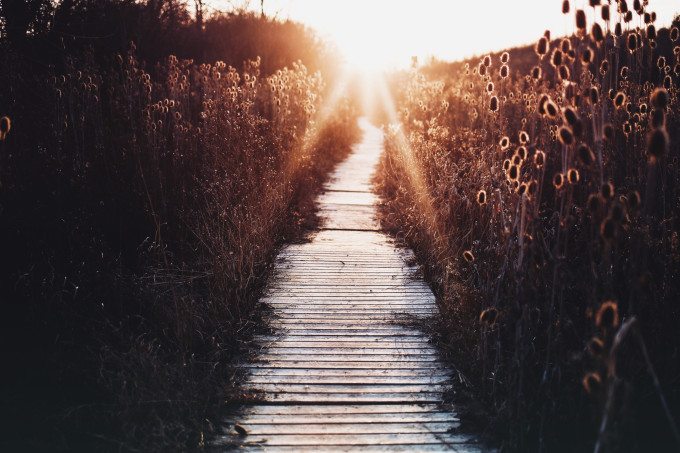
All images by Bryan Minear. Used with permission.
Photographer Bryan Minear loves using his iPhone just as much as he loves his Fujifilm cameras. He is an Ohio-born photographer and designer currently based in Detroit. A professional since 2007, he’s had his hands in nearly every form of photography. “…it wasn’t until recently limiting myself to only shooting stuff that I care about (weddings, landscape, and architecture) that it has really blossomed for me both as a business and as an art form.” says Bryan in his initial pitch email.
Since earlier this year, he’s been using Instagram to create at least one photo a day. This includes not only shooting but editing and sharing older photos. He’s currently working on a portrait series that he is calling #HoldStillTheSkyIsCrazy where he uses the Average Camera Pro App on the iPhone to take dynamic portraits with crazy sky movement. “Something that was inspired by my love of ND filters and long exposure daytime shots.”
Bryan has had a love of photography since his youngest days, and today he uses his Instagram to show off lots of his work. Much of that work that you may be captivated by are his landscapes.
Phoblographer: Talk to us about how you got into photography.
Bryan: My grandfather was a photographer back in his day and he is one of my main sources of inspiration. But even my own dad was always taking pictures and recording home videos with various cameras throughout my childhood. I certainly inherited my obsession with technology from him. It’s funny, because recently I was back home in Ohio watching home videos from when i was little and my mom remarked about how much I wanted to play with the video camera at a young age. I can remember when my dad brought home an older Sony Cybershot digital camera and I was just obsessed with that thing. I would sneak into his office and mess around with it as often as I could.
Eventually I inherited it and I would go out and take photos all the time. I remember having basic programs to edit photos, really just whatever I could get my hands on at the time. It was all just experimental for me. It wasn’t until college that I really settled into figuring out photography as an art form. I took several film photography classes and my graphic design lab acquired the original Canon Rebel that we could check in and out.
Needless to say, the thing basically lived with me. As much as I loved the film process, having instant access to the images without having to take a trip to the darkroom is what really inspired me to keep at it. At this time, Lightroom wasn’t in existence yet, so I learned to import my photos through adobe bridge and edit via camera raw + photoshop, and to this day that is still the process that I use. I have tried many times to get into Lightroom, but I just prefer the “old fashioned” way.
Phoblographer: What got you into shooting landscapes?
Bryan: I am from a very rural area in Ohio with lots of nature, rolling hills and rock cliffs. I just naturally gravitated towards that stuff because I was there and I had lots of it. But when I discovered Ansel Adams, everything changed for me. Realizing the emotion that you can invoke within a landscape scene changed the way I was shooting and editing. Mainly because Ansel was showing (via filters and darkroom) what HE saw within a scene, not just what a regular joe standing in that same spot with a camera would see. So that became my goal with my imagery.
I am also a huge cinephile, and great cinematography speaks volumes to me. I tend to approach my images with a “color grading” mindset, where I focus on bringing out specific tones and colors to create, what I have more recently started calling, “Atmospherics” which are just landscape images that invoke atmosphere and mood.
Phoblographer: You’re a Fujifilm X series camera user and you use the iPhone. What makes these options attractive to you?
Bryan: Definitely a combination of portability and image quality. The first time I ever held the original X100 in my hands, I felt an almost organic connection to the camera that I never had with Canon DSLRs. I was a gearhead pixel-peeper that touted “full frame for life” for a long time, but once I started shooting with Fuji X Cameras, that stuff didnt seem to matter much anymore. Those cameras began something of a personal artistic renaissance for me.
It may sound stupid to some, but I felt what photographers like Zach Arias and David Hobby felt. The love and passion that I initially had for photography when i didn’t really know what I was doing had returned. And now that I have the Fuji X-T1 + X100T combo. I legitimately feel like I can shoot anything personal or professional that I will ever need to. With the iPhone, it’s a lot of the same. Some of the things I can accomplish with an iPhone still blow my mind considering the crappy point and shoot cameras that I had when I was younger. But its camera abilities are secondary to the editing capabilities for me. Sure it takes great photos, but what you can then DO with those photos is the real story.
I’m to the point now that even when I am shooting with my Fuji’s, I can just boot up the wifi, shoot a JPEG over to my phone, edit it and post all within a few minutes of taking the photo. That’s something I was never able to do with my 5D3, despite the lack of wifi, when I shot with that camera i had that “full frame” mindset where I wasn’t taking advantage of the cameras abilities if i wasn’t shooting and editing the RAW files. That being said, I do still shoot RAW + JPEGS on all my fuji cameras, but the in-camera RAW converter allows me to process those files without a computer. All in all, I just feel like between Fuji and iPhone, I will never have a need for another system. The ongoing “quest” for the best gear I was on doesn’t really exist anymore.
Phoblographer: When you go about photographing scenes, does your specific creative vision come to you as you’re shooting or more so when you’re editing? What specifically makes you pick your camera up to shoot a scene typically?
Bryan: Honestly, feel like it can be both. Sometimes I see a particular scene or am getting a certain light while I am out shooting that inspires me to take the shot. While other times, I can be out shooting and nothing really jumps out at me, but when I start going through the images and tweaking colors and exposure, that is really when the inspiration hits. Obviously I am a big purveyor of getting the shot “in camera” I’m not saying that I just go out and spray some shots and hope to get back to my computer to make them “work”. I wouldn’t even press the shutter unless I saw some potential within a scene.
If you look at my instagram feed, you’ll see that I am a huge fan of golden hour and clouds. What you don’t see is that I am also a fan of scouting locations and waiting for the shot to come to me. When I go out, I am always looking for interesting light, weather conditions, or dynamic colors and clouds. Sunsets and sunrises are as unique as snowflakes, you are rarely, if ever, going to see the same combination, and getting out at those hours is really inspiring for me. In most cases, knowing that the light is constantly changing and could burn out at any minute really gets my adrenaline going as well. I’ve missed more than my fair share of awesome scenes, but I intend to capture as many as I can experience.
Phoblographer: Lots of your work is all about lines, paths, and very specific skies. In a way, it provides an overall sense of balance to the scenes. What made you want to specifically go for these scenes?
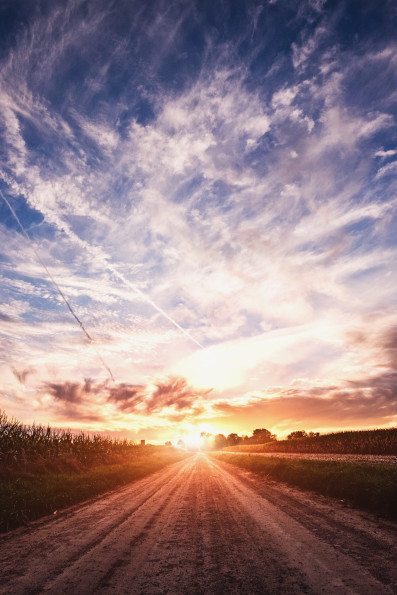
Bryan: I am naturally drawn to lines and symmetry because of my designer brain, but a lot of the time I am out with a particular set of emotions on my mind. You can ask my wife, I am not one to be outwardly emotional no matter what I am feeling and this gives me an abstract way to express myself. I am a very visual person, so I can share a photo and feel like I have overcome something without even expressing that in words. Sometimes it provides me with just enough clarity to overcome a particular issue, and sometimes its nice to just put the camera down, live in the moment, and experience something that is happening right in front of you. It’s a reminder of how small we all are, yet how impactful our lives can be to everyone around us.
Phoblographer: What are your top three places to photograph and why are those spots so special to you?
Bryan: In no particular order:
- London, because it was my first international trip, as well as functioning as a “make-up” honeymoon for my wife and I after a rough actual honeymoon. There is so much to see there and it is the perfect mashup of classic and modern architecture that make it impossible for any photographer to have a bad trip.
- Next would be Sleeping Bear Dunes outside of Traverse City, Michigan. Again, my wife surprised me and took me on a birthday trip up that way this past September so it was very special to get to experience that with her. That place is just magical. It doesn’t seem like it should be where it is geographically. And the skies are so free from light pollution that after the sun goes down, it provides unbelievable landscapes to shoot stars, which you get a lot out west, but not so much in this part of the US.
- And lastly, probably Southeastern Ohio where I grew up. Just because you can go out exploring and find something new and awesome every time you go. It’s special to me because that is where all of this started, and no matter where I go, I will always remember the first shots I took that inspired me enough to keep at it.
Phoblographer: What filters do you use? Your work tends to embrace warmer looks and a lower contrast that you’d see in something like certain negative films like Kodak Portra.
Bryan: My favorite films of all time are Fujichrome Astia 100F, and Kodak Ektachrome 64 Professional. That being said the colors that I use often vary quite a bit from shot to shot, though i do try to maintain a consistency just by using the same techniques. Since the majority of my work is for posting to instagram, I will share that typical workflow. I import the RAWs into bridge, edit in camera raw, most of the time using Fujifilm’s Astia or Classic Chromes color profile as my baseline for color, though i do own a couple of the VSCO film packs that I use on occasion. Open in photoshop and clean up anything that I might not like or want to enhance. I do a lot of luminosity masking to bring out specific tones within a scene (which is really just a fancier more natural way of doing manual, hand-painted HDR).
One of my favorite things to do is to make a contrasty black & white version of my photo using Nik Silver Efex, overlay that on top of the color version using the luminosity blending mode, and then tweak the opacity to get the desired effect. I really feel like this gives me an image with much more of the contrast that I am trying to achieve, while also bringing out the tonality in the colors of the image. At this point I will airdrop the photo over to my phone to finish off the editing. I feel like since the final edit is going to be viewed on the phone, i need to make the final touches that way for consistencies sake. I will then finish off using apps such as VSCOCam, Afterlight, Darkroom, Faded, and Mextures (if I am feeling particularly saucy).
Phoblographer: How do you use Instagram as a marketing tool for your business?
Bryan: I started the instagram thing as a means to satisfy my need to create, as well as a way to meet people that I could go shooting with. I honestly wasn’t looking at it as a marketing tool or anything. But Instagram gives me a “living portfolio” of work that I can constantly point potential clients to. I try to keep my website up-to-date, but even that takes time. Instagram is quick and simple, and its at a point now where an Instagram feed is an acceptable form of portfolio. I know guys that don’t have a web presence outside of Instagram and are being hired on a national level for ad campaigns. For me, it’s all about shooting the stuff that I absolutely love to shoot and letting that show through in my work. A potential client can look through my feed, see that I don’t shoot studio portraits and go find someone who does. I can and have shot studio portraits, but it’s not something that I find particularly interesting, so i don’t advertise that I do it. It’s also about the community, I can’t tell you the number of potential clients (that i don’t even know are potential clients) that comment on my photos, and by just commenting back and striking up a conversation, I am opening that door for them. My advice is to focus on shooting what makes you the happiest, and then see how you can monetize that. But you need to start with the passion, otherwise you burn out quick.
